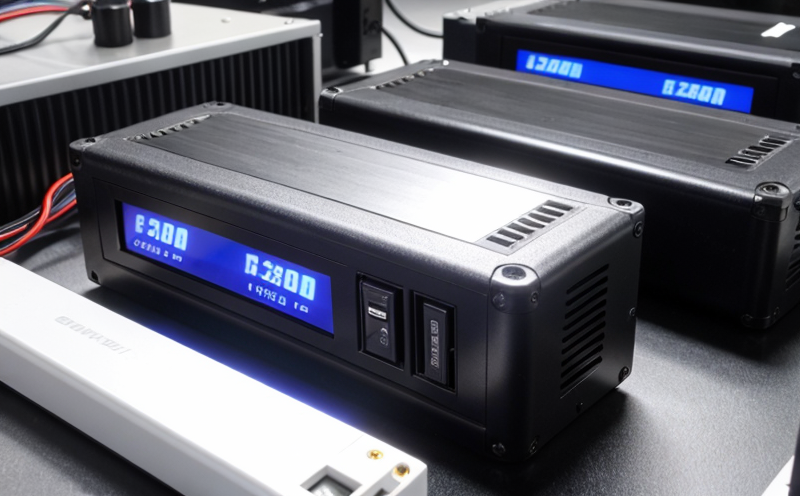ANSI C18.3M Part 2 Button Cell Performance Testing
The ANSI C18.3M Part 2 standard provides a comprehensive framework for testing button cell batteries, which are commonly used in small electronic devices such as watches, calculators, and hearing aids. This standard ensures that the performance of these cells is consistent with industry expectations and regulatory requirements.
Button cells undergo rigorous testing to evaluate their safety, reliability, and performance under various conditions. The tests cover a wide range of parameters including internal resistance measurement, capacity retention, voltage stability, and more. Compliance with ANSI C18.3M Part 2 is crucial for manufacturers to ensure that their products meet stringent quality standards.
The testing process involves several key steps. First, the battery cells are prepared according to industry best practices. This includes ensuring the cell is at a standard state of charge and temperature before testing begins. Next, the internal resistance measurement determines how efficiently the cell can deliver current without excessive loss. Capacity retention tests assess how much charge remains in the cell over time, while voltage stability checks ensure consistent output voltage throughout the discharge cycle.
The ANSI C18.3M Part 2 standard also specifies detailed procedures for these tests, ensuring consistency and accuracy across laboratories worldwide. By adhering strictly to this standard, labs can produce reliable data that is universally accepted by regulatory bodies and industry stakeholders.
Compliance with ANSI C18.3M Part 2 brings numerous benefits to manufacturers and their customers. It enhances brand reputation through consistent product quality, reduces liability risks associated with non-compliant products, and facilitates smoother market entry into regulated markets. Additionally, it fosters innovation by encouraging continuous improvement in battery technology.
Manufacturers who comply with this standard not only meet regulatory requirements but also gain a competitive edge in the global marketplace. The stringent testing protocols ensure that only high-quality cells reach consumers, thereby improving overall satisfaction and trust within the industry.
In summary, ANSI C18.3M Part 2 Button Cell Performance Testing plays a vital role in maintaining quality standards for button cell batteries. Its rigorous testing procedures help manufacturers produce reliable products that meet both regulatory expectations and customer needs.
Benefits
Compliance with ANSI C18.3M Part 2 Button Cell Performance Testing offers several advantages to manufacturers, ensuring their products are of the highest quality and reliability:
- Enhanced Brand Reputation: Consistent product performance leads to a positive image, fostering customer trust.
- Reduced Liability Risks: Non-compliant products could lead to legal issues; compliance mitigates these risks.
- Facilitated Market Entry: Meeting regulatory standards opens doors to international markets with strict requirements.
- Foster Innovation: Rigorous testing encourages continuous improvement in battery technology.
These benefits collectively contribute to a more robust and trustworthy industry ecosystem, benefiting all stakeholders involved.
Industry Applications
| Application | Description |
|---|---|
| Watches | Powering the timekeeping function in precision devices. |
| Cameras | Supporting critical operations like flash and shutter release. |
| Hearing Aids | Providing consistent power to ensure clear sound transmission. |
| Electronic Toys | Fueling the play capabilities of small, portable gadgets. |
| Pacemakers | Ensuring reliable energy supply for critical medical devices. |
| Emergency Lighting | Providing backup power in case of emergencies or power outages. |
| Key Fobs and Remotes | Maintaining functionality through consistent power delivery. |
The diverse applications of button cell batteries highlight their importance across multiple sectors, underscoring the need for thorough performance testing to ensure reliability and safety in all these contexts.
International Acceptance and Recognition
The ANSI C18.3M Part 2 standard enjoys widespread recognition across various global markets due to its stringent quality control measures and emphasis on consistent performance metrics. Regulatory bodies around the world have embraced this standard, integrating it into their certification processes for button cell batteries.
For instance, in Europe, the European Committee for Standardization (CEN) has adopted ANSI C18.3M Part 2 as a harmonized standard under EN 50091-4:2017. Similarly, in Asia, several countries like Japan and South Korea have incorporated this standard into their national standards for button cells.
The United States also recognizes the importance of ANSI C18.3M Part 2, with many state agencies and private organizations adopting it as a benchmark for evaluating battery performance. This international acceptance ensures that manufacturers can confidently export their products to different regions without facing compliance issues.
Moreover, compliance with this standard is often a prerequisite for obtaining certifications from renowned bodies such as UL (Underwriters Laboratories) and TÜV (Technischer Überwachungs-Verein). These certifications further enhance the credibility of the tested batteries in international markets.
The global recognition of ANSI C18.3M Part 2 underscores its significance in maintaining high standards for button cell performance testing, contributing to a safer and more reliable battery ecosystem worldwide.





